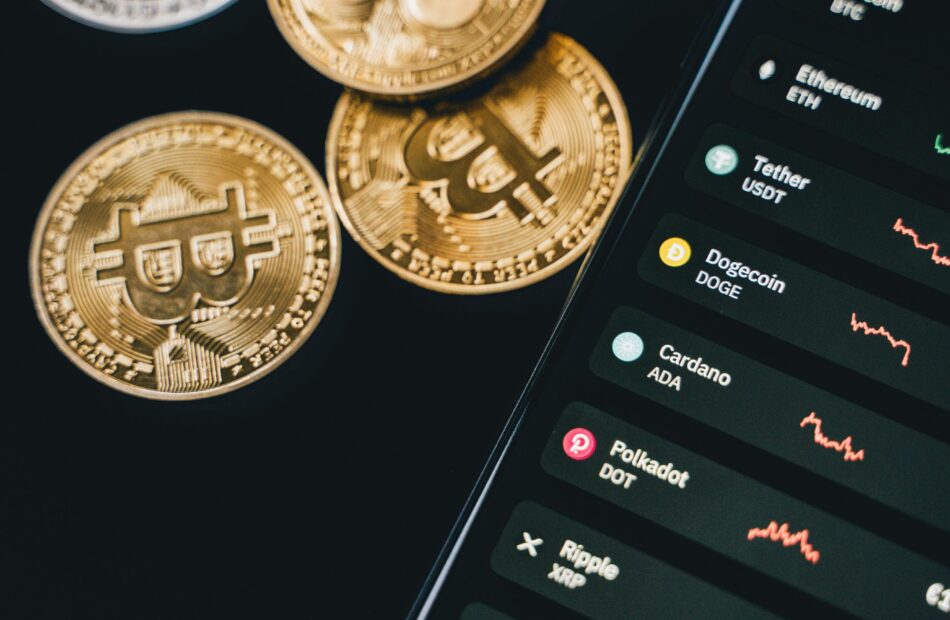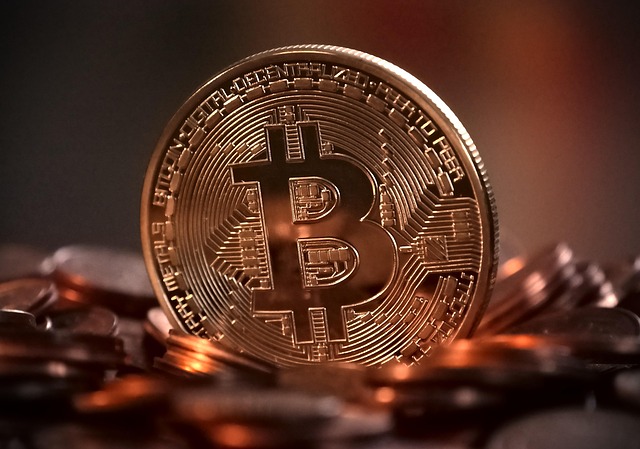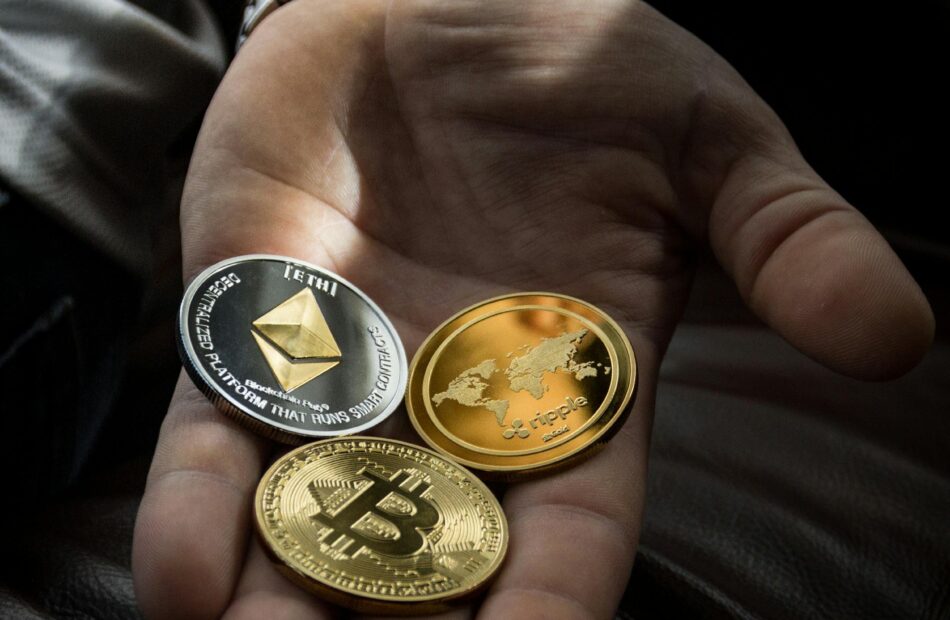Only 11% of El Salvador’s registered Bitcoin firms operational
Only 20 of the 181 Bitcoin service providers registered with El Salvador’s central bank are operational, with the rest failing to meet the country’s requirements under its Bitcoin Law. Local media outlet El Mundo cited data from the Central Reserve Bank of El Salvador, showing that 11% of the service providers are operational. According to the central bank’s database, the rest of the providers are classified as non-operational. The data showed that at least 22 non-operational providers have failed to meet most of the country’s Bitcoin Law requirements, which mandate that providers implement stringent supervision of their financial systems. Most of El Salvador’s Bitcoin service providers are non-operationalEl Salvador’s Bitcoin Law requires providers to maintain an Anti-Money Laundering (AML) program, keep records that accurately reflect the company’s assets, liabilities and equity and have a tailored cybersecurity program depending on the nature of its services. The data showed that 89% of the registered providers have failed to meet some of these obligations to be classified as operational. Still, a few firms have satisfied the legal criteria, including the state-backed Chivo Wallet and companies including Crypto Trading & Investment and Fintech Américas.Related: Cathie Wood to kick off El Salvador’s AI public education programEl Salvador’s Bitcoin experimentIn 2021, El Salvador became the first country to accept Bitcoin as legal tender along with the US dollar. This move made Bitcoin integral to El Salvador President Nayib Bukele’s economic strategy. However, the Central American country recently signed a deal with the International Monetary Fund (IMF) on a $1.4 billion loan in exchange for rolling back some of its Bitcoin-related efforts. Under the agreement, taxes will be paid in US dollars and public institutions will limit their use of Bitcoin.On March 3, the IMF asked the country to stop its public sector Bitcoin buys. Still, Bukele said the government will continue to purchase Bitcoin, seemingly contradicting its IMF deal.The IMF deal prompted speculation about whether the country would rescind Bitcoin’s status as legal tender. John Dennehy, an El Salvador-based Bitcoin activist and educator, said in an X Space with Cointelegraph that a rollback law changing Bitcoin’s legal status is set to take effect on April 30.Magazine: Memecoin degeneracy is funding groundbreaking anti-aging research
Northern Marianas vetoes bill for Tinian to launch its own USD stablecoin
The governor of the Northern Mariana Islands, a small Pacific US territory just north of Guam, has killed the legislation that would have allowed one of the territory’s local governments to launch a fully backed US dollar-pegged stablecoin.In an April 11 letter seen by Cointelegraph, Northern Mariana Islands Governor Arnold Palacios said he vetoed the bill as it “presents several legal issues and may be unconstitutional.”Palacios’ letter said the bill, which largely dealt with issuing licenses to internet casinos, would regulate an activity that could not “be clearly restricted” to Tinian, a small island forming part of the territory that was hoping to launch a stablecoin.Tinian, which has just over 2,000 residents and a largely tourism-based economy, is governed by the local government, the Municipality of Tinian and Aguiguan, one of four municipalities in the Commonwealth of the Northern Mariana Islands.In February, Republican Northern Marianas Senator Jude Hofschneider led the introduction of the bill to amend a local Tinian law to allow internet-only casino licenses, which tacked on a provision allowing the Tinian treasurer to issue, manage and redeem a “Tinian Stable Token.” The four-member Tinian delegation to the Marianas legislature passed the bill in a unanimous vote on March 12.In vetoing the bill, Palacios didn’t comment on the proposed stablecoin, instead taking issue with its aim to police an industry that can cross jurisdictional boundaries, and said the measure lacked “robust enforcement measures to prevent illegal gaming activities.”A highlighted excerpt of Governer Palacios’ letter noting his reasons for vetoing the stablecoin and internet gambling bill Source: Northern Mariana Islands Governor’s OfficeTinian misses chance at beating WyomingThe bill’s passage could have seen Tinian’s government be the first US government entity to issue a stablecoin ahead of Wyoming, whose Governor Mark Gordon said in March that the state’s stablecoin could be ready for a launch in July.The stablecoin was to be known as the Marianas US Dollar (MUSD), which was to be fully backed by cash and US Treasury bills held in reserve by the Tinian Municipal Treasury, according to statements shared with Cointelegraph last month.Related: The GENIUS stablecoin bill is a CBDC trojan horse — DeFi execThe Tinian local government chose tech services firm Marianas Rai Corporation, based in the Commonwealth’s capital of Saipan, to exclusively provide the infrastructure to issue and redeem MUSD and develop its ecosystem.The token was slated to launch on the eCash blockchain, a network that rebranded from Bitcoin Cash ABC in 2021 and is a fork of Bitcoin Cash — a blockchain that split off from Bitcoin in 2017.The launch of MUSD was meant to coincide with Google’s $1 billion plan announced in April to route fiber-optic subsea cables from the mainland US through Tinian and onto Japan to improve internet connectivity.Magazine: Elon Musk’s plan to run government on blockchain faces uphill battle
Price analysis 4/14: SPX, DXY, BTC, ETH, XRP, BNB, SOL, DOGE, ADA, LEO
Bitcoin (BTC) bulls are trying to start the week on a positive note by pushing the price above $85,000. Michael Saylor’s Strategy has used the recent dip to buy 3,459 Bitcoin for $285.5 million at an average price of $82,618. That boosts the total holding of the firm to 531,644 Bitcoin purchased at an average price of $67,556.However, not everyone is bullish in the near term. Several institutional investors seem to have trimmed their holdings. CoinShares reported on April 14 that digital asset exchange-traded products (ETPs) witnessed $795 million in outflows last week. The $7.2 billion in outflows since February have reversed nearly all year-to-date inflows, now at just $165 million.Daily cryptocurrency market performance. Source: Coin360Although Bitcoin seems to have bottomed out in the short term, a roaring bull market rally is unlikely to start in a hurry. The tariff headlines and the outcome of the tariff talks between the United States and other countries could dictate the price action.Could Bitcoin build upon the recovery, pulling altcoins higher? Let’s analyze the charts to find out.S&P 500 Index price analysisThe S&P 500 Index (SPX) witnessed a hugely volatile week, but a positive sign is that lower levels attracted solid buying by the bulls.SPX daily chart. Source: Cointelegraph/TradingViewAfter the massive volatility of the past few days, the index could enter a quieter phase. Sellers are likely to sell the rallies near 5,500, while the bulls are expected to buy the dips to the 5,119 support. That signals a possible range-bound action between 5,500 and 5,119 for some time.The next trending move is expected to begin after buyers push the price above 5,500 or sink below 4,950. If the 5,500 level gets taken out, the index could surge to 5,800.US Dollar Index price analysisThe US Dollar Index (DXY) has been in a freefall since turning down from the 20-day exponential moving average (102.81) on April 10.DXY daily chart. Source: Cointelegraph/TradingViewBuyers defended the 99.57 level on a closing basis on April 11, but the bears renewed their selling on April 14. If the price closes below 99.57, the index could tumble to 97.50 and, after that, to 95. The longer the price remains below 99.57, the greater the risk of starting a new downtrend.If buyers want to prevent a downward move, they will have to swiftly push the price back above 99.57. That could start a recovery to 101.Bitcoin price analysisBitcoin broke above the resistance line on April 12, and the bulls successfully held the retest of the breakout level on April 13.BTC/USDT daily chart. Source: Cointelegraph/TradingViewThe 20-day EMA ($82,979) has flattened out, and the RSI is near the midpoint, suggesting that the selling pressure is reducing. The BTC/USDT pair could climb to $89,000, which is likely to act as a stiff resistance. If the price turns down sharply from $89,000 and breaks below the 20-day EMA, it will indicate a range formation. The pair may oscillate between $89,000 and $73,777 for a few days.If sellers want to trap the aggressive bulls and retain control, they will have to quickly pull the price back below the 20-day EMA. If they do that, the pair may descend to $78,500 and subsequently to the vital support at $73,777.Ether price analysisEther (ETH) is facing selling at the 20-day EMA ($1,722), as seen from the long wick on the April 14 candlestick.ETH/USDT daily chart. Source: Cointelegraph/TradingViewIf the price plummets below $1,546, the ETH/USDT pair could retest the $1,368 support. This is a crucial level for the bulls to defend because a break below $1,368 could start the next leg of the downtrend toward $1,150.Conversely, if buyers propel the price above the 20-day EMA, it signals that the bears are losing their grip. There is resistance at the 50-day SMA ($1,955), but it is likely to be crossed. The pair may then ascend to the solid resistance at $2,111.XRP price analysisXRP (XRP) turned down from the 50-day SMA ($2.24) on April 13, indicating that sellers are active at higher levels.XRP/USDT daily chart. Source: Cointelegraph/TradingViewThe 20-day EMA ($2.10) has flattened out, and the RSI is near the midpoint, indicating a balance between supply and demand. A break below $2 will tilt the advantage in favor of the bears. The XRP/USDT pair could drop to $1.72 and later to $1.61.Buyers will gain the upper hand if they push and maintain the price above the 50-day SMA. If they can pull it off, the pair could rally to the resistance line. Sellers are expected to aggressively defend the resistance line because a break above it signals a potential trend change.BNB price analysisBNB (BNB) is facing resistance at the downtrend line, but a minor positive is that the bulls have not ceded much ground to the bears. BNB/USDT daily chart. Source: Cointelegraph/TradingViewThat increases the likelihood of a break above the downtrend line. If that happens, the BNB/USDT pair could ascend to $645. Sellers will try to guard the $645 level, but it is likely to be crossed.This positive view will be invalidated in the near term if the price turns down sharply from the downtrend line and breaks below $566. That could keep the pair stuck inside the triangle for a while longer.Solana price analysisSellers are trying to defend the 50-day SMA ($130) in Solana (SOL), but the bulls have kept up the pressure.SOL/USDT daily chart. Source: Cointelegraph/TradingViewIf the price closes above the 50-day SMA, the SOL/USDT pair could rise to the $147 to $153 resistance zone. Sellers are expected to vigorously defend this zone, but if the bulls prevail, the pair could surge to $180.The first support on the downside is the 20-day EMA ($123). A bounce off the 20-day EMA will keep the positive momentum intact, while a break below it could sink the pair to $110 and eventually to $95.Related: Solana rallies 20% against Ethereum, but is $300 SOL price within reach?Dogecoin price analysisBuyers are trying to start a recovery in Dogecoin (DOGE) but are expected to face stiff resistance from the bears at the moving averages.DOGE/USDT daily chart. Source: Cointelegraph/TradingViewIf the price turns down from the moving averages, the bears will again attempt to sink the DOGE/USDT pair below $0.14. If they manage to do that, the selling could accelerate, and the pair may slump to $0.10.Contrarily, if buyers propel the price above the moving averages, the pair could rally to $0.20. This is an important near-term level to watch out for because a break above it will complete a double-bottom pattern. The pair could then climb toward the pattern target of $0.26.Cardano price analysisBuyers are struggling to push Cardano (ADA) above the 20-day EMA ($0.65), indicating that demand dries up at higher levels.ADA/USDT daily chart. Source: Cointelegraph/TradingViewIf the price turns down from the 20-day EMA, the next support on the downside is $0.58 and then $0.50. Buyers are expected to fiercely defend the $0.50 level because a break below it could sink the ADA/USDT pair to $0.40.On the upside, buyers will have to drive and maintain the price above the 50-day SMA ($0.71) to signal that the downtrend could be over. That could propel the pair to $0.83 and subsequently to $1.03.UNUS SED LEO price analysisBuyers are trying to push UNUS SED LEO (LEO) above the 20-day EMA ($9.39), but the bears are posing a substantial challenge.LEO/USD daily chart. Source: Cointelegraph/TradingViewThe flattening 20-day EMA and the RSI near the midpoint suggest a balance between supply and demand. That could keep the LEO/USD pair stuck between $9.90 and $8.79 for a few days.The next trending move could begin on a break above $9.90 or below $8.79. If buyers kick the price above $9.90, the pair will complete a bullish ascending triangle pattern. This bullish setup has a target objective of $12.04.On the downside, a break below $8.70 could signal the start of a deeper correction toward $8.30.This article does not contain investment advice or recommendations. Every investment and trading move involves risk, and readers should conduct their own research when making a decision.
Bybit integrates Avalon through CeFi to DeFi bridge for Bitcoin yield
Crypto exchange Bybit has partnered with lending protocol Avalon to offer Bitcoin yield to its users.According to an April 14 Avalon Labs X announcement, the centralized decentralized finance (CeDeFi) protocol will now be a part of the exchange’s yield product, Bybit Earn. Avalon said it will allow the platform’s users to earn yield from Bitcoin (BTC) by arbitrating on its fixed-rate institutional borrowing layer.Source: Avalon LabsAvalon Labs announced in March that it raised a minimum of $2 billion worth of credit with possible scaling as the need arises. The product allows institutional borrowers to access USDt (USDT) liquidity without liquidating their Bitcoin holdings at a fixed 8% borrowing cost.In February, Avalon Labs also announced it was considering issuing a Bitcoin-backed debt-focused public fund. Venus Li, co-founder of Avalon Labs, said at the time that the fund could be issued by leveraging a Regulation A US securities exception:“We have spent years researching how Regulation A has been applied in traditional finance and whether it could be a viable path for crypto companies. While successful precedents in the crypto industry are limited, our analysis of previous SEC-approved cases suggests a viable path forward.”Related: Bitcoin yield opportunities are booming — Here’s what to watch forCentralized and decentralized finance uniteAvalon Labs’ product is a CeDeFi protocol, somewhere between decentralized finance (DeFi) and centralized finance (CeFi). This product category — with increased control over capital flows and access — often has advantages in meeting regulatory requirements for integrating with CeFi platforms.The Bybit Earn integration leverages Avalon Labs’ 1:1 Bitcoin-pegged token FBTC, developed by DeFi protocol Mantle and Bitcoin-centric crypto developer Antalpha Prime. These tokens are then bridged onto Ethereum and other blockchains.Related: Ethena Labs, Securitize launch blockchain for DeFi and tokenized assetsA multi-protocol systemAvalon Labs’ platform accepts FBTC as collateral and lends it at fixed rates. The borrowed USDt stablecoin is then deployed to high-yield strategies through the Ethena Labs synthetic dollar protocol. The assets employed in those strategies include Ethena USD (USDe) and Ethena Staked USD (sUSDE). The announcement claims:“Returns are stable, secure, and passed back to Bybit Earn users—making Bitcoin a productive asset while maintaining simplicity and risk control.“In other words, Avalon Labs serves as a bridge between Bybit and the yield-earning potential of Ethena Labs’ protocol. Avalon Labs describes this as a “CeFi to DeFi” bridge.The news follows Ethena raising $100 million in late February to deploy a new blockchain and launch a token focused on traditional finance. In January, Ethena also announced plans to roll out iUSDe, a product identical to USDe but designed for regulated financial institutions.Bybit did not respond to Cointelegraph’s inquiries by publication.Magazine: The real risks to Ethena’s stablecoin model (are not the ones you think)
How to read a stablecoin attestation report and why it matters
Key takeawaysStablecoin attestation reports provide third-party verification that each token is backed by real-world assets like cash and US Treasurys.Attestation ≠ audit: Attestations are point-in-time checks, not deep financial audits, so users should still perform broader due diligence.Not all tokens are redeemable. Time-locked, test or frozen tokens are excluded from reserve calculations to reflect only actively circulating coins.USDC sets an industry benchmark with regular third-party attestations, transparent reserve reporting and compliance with MiCA regulations.Stablecoins play a crucial role in the digital asset ecosystem, bridging traditional fiat currencies and the decentralized world of cryptocurrencies. How can you be confident that each stablecoin is backed by real-world assets? This is where stablecoin attestation reports come in. Understanding how to read attestation reports is essential for anyone interacting with stablecoins like USDC (USDC) or Tether USDt (USDT). This guide explains everything you need to know about stablecoin attestation reports, how they work and why they matter.What is a stablecoin attestation report?A stablecoin attestation report is a formal document issued by an independent third party — a certified public accountant (CPA) firm — that verifies whether the stablecoin issuer holds sufficient reserves to back the coins in circulation. Unlike full audits, which evaluate broader financial systems and controls, attestations are narrower in scope. They confirm specific facts, like whether reserve balances match circulating supply at a single point in time.Think of an attestation as a snapshot taken by accountants saying, “Yes, we’ve checked, and the money is there right now.”It’s not as deep or wide as an audit, but it still builds trust.For example, if a stablecoin issuer claims that each token is backed 1:1 by US dollars, an attestation report would provide evidence supporting that claim. Stablecoins like USDC regularly publish such reports to prove that their coins are fully backed, helping to build trust in their ecosystem.Attestation reports are especially critical for investors and institutions that depend on stablecoins for cross-border settlements, collateral in lending protocols and participation in decentralized finance (DeFi) applications. Without confidence in the reserves’ authenticity, the stablecoin system risks collapse, which can impact the broader crypto market.Purpose of stablecoin attestations: Why transparency matters?Transparency is essential in the crypto space, especially for stablecoins, which serve as a medium of exchange, a store of value and collateral on DeFi platforms. Attestation reports offer a window into a stablecoin issuer’s reserves and disclosure practices, allowing users, regulators and investors to evaluate whether the issuer is operating responsibly.Issuers like Circle, the company behind USDC, publish attestation reports to demonstrate compliance with regulatory expectations and assure users that the coins they hold are not only stable in name but also in substance. In doing so, they promote stablecoin investor safety and support market integrity.This transparency builds the foundation for regulatory trust and helps attract traditional financial institutions into the space. It also aligns with broader industry goals for increasing stablecoin compliance, particularly as governments worldwide explore stablecoin-specific regulations.Who conducts the attestation?Stablecoin attestation reports are prepared by independent accounting firms. For instance, Circle’s USDC attestation reports are conducted by Deloitte (as of April 13, 2025), a leading global audit and advisory firm. These firms follow professional standards set by bodies like the AICPA (American Institute of Certified Public Accountants).Independent attestors are essential because they remove conflicts of interest. Having a third-party review reserves ensures that the information is unbiased, credible and aligned with global assurance standards.AICPA’s 2025 criteria: Standardizing stablecoin attestationsIn response to growing concerns over inconsistent stablecoin disclosures, the AICPA introduced the 2025 Criteria for Stablecoin Reporting, a standardized framework for fiat-pegged, asset-backed tokens. These criteria define how stablecoin issuers should present and disclose three key areas: Redeemable tokens outstanding.The availability and composition of redemption assets.The comparison between the two.What makes the 2025 Criteria important is its emphasis on transparency and comparability. For example, token issuers must clearly define redeemable versus nonredeemable tokens (such as time-locked or test tokens), identify where and how reserves are held and disclose any material legal or operational risks affecting redemption.By aligning attestation reports with this framework, accounting firms ensure that evaluations are conducted using suitable, objective and measurable criteria, a key requirement under US attestation standards. This gives investors, regulators and DeFi users a more consistent and reliable basis for evaluating stablecoin solvency and trustworthiness.As adoption grows, the 2025 Criteria may become the industry benchmark, especially as regulatory bodies increasingly rely on standardized reporting to assess stablecoin risks and enforce compliance.Did you know? Not all stablecoins in circulation are redeemable. Some, like time-locked tokens, are temporarily restricted and can’t be accessed until a specific date. Others, known as test tokens, are used only for internal system testing and are never meant to be redeemed. These tokens are excluded from reserve calculations in attestation reports to ensure an accurate picture of what’s backing user-accessible stablecoins.Behind the peg: How to read a stablecoin report and spot real backingReading a stablecoin attestation report isn’t just about scanning numbers. It’s about knowing whether the stablecoin you’re holding is backed. Here’s how to break it down step by step and spot what really matters:Check the report date: Attestations are point-in-time reviews. Look for the exact date the report covers (e.g., Feb. 28, 2025). It confirms reserves on that day only, not before or after.Compare circulating supply vs reserves: Find the number of tokens in circulation and the total value of reserves. The reserves should be equal to or greater than the supply. If not, that’s a red flag.Look at what backs the reserves: Reserves should be held in safe, liquid assets like US Treasurys or cash in regulated financial institutions. Watch out for risky or vague asset descriptions.Review custodian and asset details: Check who’s holding the funds (e.g., major banks or money market funds) and where they’re stored. Remember, reputable custodians add credibility.Understand the methodology: The report should explain how the review was conducted, what data was verified, what systems were used and which standards (like AICPA) were followed.Identify excluded tokens: Some tokens, like test tokens or time-locked tokens, are excluded from circulation counts. Look for notes explaining these exceptions.Check who performed the attestation: An independent and recognized accounting firm (like Deloitte or Grant Thornton) adds legitimacy. If the attestor isn’t disclosed or independent, treat with caution. A signed statement from the accounting firm verifies the accuracy of the issuer’s claims.Investors may also look for supplementary notes within the report, such as jurisdiction of reserve accounts, legal encumbrances on assets or clarification of valuation techniques. All these elements help paint a fuller picture of risk and reliability.What the February 2025 USDC attestation report revealsIn March 2025, Circle released its latest reserve attestation report, offering a transparent look at what backs one of the most widely used digital dollars in crypto.The report was independently examined by Deloitte, one of the “Big Four” global accounting firms. Deloitte confirmed that, as of both Feb. 4 and Feb. 28, 2025, the fair value of Circle’s reserves was equal to or greater than the amount of USDC in circulation.The below snapshot from Circle’s February 2025 attestation report shows that the amount of USDC in circulation stood at $54.95 billion on Feb. 4 and $56.28 billion on Feb. 28. The fair value of reserves held to back USDC exceeded these figures, totaling $55.01 billion and $56.35 billion on the respective dates.What’s in the reserves?Circle holds its USDC reserves mainly in:US Treasury securitiesTreasury repurchase agreementsCash at regulated financial institutionsThese assets are kept separate from Circle’s corporate funds and are managed through the Circle Reserve Fund, a regulated money market fund.The attestation also accounts for technical factors like “access-denied” tokens (e.g., frozen due to legal or compliance reasons) and tokens not yet issued, ensuring an accurate measure of circulating USDC.For users, this means greater confidence that every USDC token is backed by high-quality, liquid assets, just like the company claims.Did you know? As of Feb. 4 and Feb. 28, 2025, 993,225 USDC remained permanently frozen on deprecated blockchains, including the FLOW blockchain. These tokens are excluded from the official USDC in circulation totals reported by Circle.How are stablecoin reserves verified?Stablecoin attestation reports serve as a form of proof of reserves, providing independent confirmation that a stablecoin issuer holds enough assets to back the tokens in circulation. The verification process typically involves several key steps:Reviewing bank statements and financial records.Confirming cash balances held by custodians.Cross-checking reported reserves with third-party documentation.Comparing the supply of stablecoins onchain with the reported reserve amount.As mentioned, these procedures are carried out by independent accounting firms and are designed to ensure that the reserves are not only sufficient but also liquid and accessible.Some attestation reports also include details on the tools and technologies used to maintain transparency, such as real-time API integrations with custodians and onchain monitoring systems. These advancements are helping bridge the gap between traditional finance and blockchain, reinforcing trust through verifiable, tamper-resistant data.What happens if reserves don’t match supply?If an attestation report reveals that a stablecoin issuer does not hold sufficient reserves, the consequences can be severe. The issuer may face:Regulatory scrutiny: Noncompliance with financial regulations.Market sell-offs: A drop in user confidence may lead to mass redemptions.Price instability: The stablecoin may lose its 1:1 peg.These concerns highlight the need for regular, transparent crypto reserve reports. For instance, Tether has faced ongoing criticism for the lack of clarity surrounding its reserves, fueling demands for greater disclosure. This opacity has also led to Tether’s delisting in Europe under Markets in Crypto-Assets (MiCA) regulations as exchanges brace for stricter compliance requirements.Lack of transparency can also invite speculation and misinformation, which can cause unnecessary panic in the markets. As a result, proactive disclosure is not just a best practice; it’s a business imperative for stablecoin issuers.Limitations of stablecoin attestation reportsWhile attestation reports are crucial, they are not a cure-all. Here are some limitations:Point-in-time snapshots: Reports only verify reserves on a specific date.No forward-looking guarantees: Attestations don’t predict future solvency.Limited operational insight: They typically don’t cover risks like hacking, mismanagement or liquidity issues.For example, the latest USDC attestation (as discussed in this article) confirms full reserves as of Feb. 4 and Feb. 28, 2025, but it says nothing about what happens on March 1 or any day after. Users must understand these limitations and avoid assuming that attestation equals absolute safety.This is why combining attestation reports with other forms of due diligence like reading legal disclaimers, following regulatory updates and tracking company behavior is key for responsible crypto participation.Not just a report — A roadmap to trust in cryptoReading a stablecoin attestation report is more than scanning numbers; it’s a key step in assessing the trustworthiness of a digital asset. By understanding how to read attestation reports, crypto users can make informed decisions, avoid unnecessary risks and support projects that prioritize stablecoin compliance and transparency.With clearer frameworks from institutions like the AICPA and growing public pressure for stablecoin disclosure practices, the ecosystem is moving toward greater accountability. As regulators sharpen their focus and investors demand more visibility, learning to navigate crypto attestation reports will become an essential skill for all participants in the crypto economy.Whether you’re a retail investor, developer or institutional player, mastering these reports helps protect your assets and support a more transparent and trustworthy crypto future.This article does not contain investment advice or recommendations. Every investment and trading move involves risk, and readers should conduct their own research when making a decision.
How to build an AI crypto trading bot with custom GPTs
AI is transforming how people interact with financial markets, and cryptocurrency trading is no exception. With tools like OpenAI’s Custom GPTs, it is now possible for beginners and enthusiasts to create intelligent trading bots capable of analyzing data, generating signals and even executing trades.This guide analyzes the fundamentals of building a beginner-friendly AI crypto trading bot using Custom GPTs. It covers setup, strategy design, coding, testing and important considerations for safety and success.What is a custom GPT?A custom GPT (generative pretrained transformer) is a personalized version of OpenAI’s ChatGPT. It can be trained to follow specific instructions, work with uploaded documents and assist with niche tasks, including crypto trading bot development.These models can help automate tedious processes, generate and troubleshoot code, analyze technical indicators and even interpret crypto news or market sentiment, making them ideal companions for building algorithmic trading bots.What you’ll need to get startedBefore creating a trading bot, the following components are necessary:OpenAI ChatGPT Plus subscription (for access to GPT-4 and Custom GPTs).A crypto exchange account that offers API access (e.g., Coinbase, Binance, Kraken).Basic knowledge of Python (or willingness to learn).A paper trading environment to safely test strategies.Optional: A VPS or cloud server to run the bot continuously.Did you know? Python’s creator, Guido van Rossum, named the language after Monty Python’s Flying Circus, aiming for something fun and approachable.Step-by-step guide to building an AI trading bot with custom GPTsWhether you’re looking to generate trade signals, interpret news sentiment or automate strategy logic, the below step-by-step approach helps you learn the basics of combining AI with crypto trading. With sample Python scripts and output examples, you’ll see how to connect a custom GPT to a trading system, generate trade signals and automate decisions using real-time market data.Step 1: Define a simple trading strategyStart by identifying a basic rule-based strategy that is easy to automate. Examples include:Buy when Bitcoin’s (BTC) daily price drops by more than 3%.Sell when RSI (relative strength index) exceeds 70.Enter a long position after a bullish moving average convergence divergence (MACD) crossover.Trade based on sentiment from recent crypto headlines.Clear, rule-based logic is essential for creating effective code and minimizing confusion for your Custom GPT.Step 2: Create a custom GPTTo build a personalized GPT model:Visit chat.openai.comNavigate to Explore GPTs > CreateName the model (e.g., “Crypto Trading Assistant”)In the instructions section, define its role clearly. For example:“You are a Python developer specialized in crypto trading bots.”“You understand technical analysis and crypto APIs.”“You help generate and debug trading bot code.”Optional: Upload exchange API documentation or trading strategy PDFs for additional context.Step 3: Generate the trading bot code (with GPT’s help)Use the custom GPT to help generate a Python script. For example, type:“Write a basic Python script that connects to Binance using ccxt and buys BTC when RSI drops below 30. I am a beginner and don’t understand code much so I need a simple and short script please.”The GPT can provide:Code for connecting to the exchange via API.Technical indicator calculations using libraries like ta or TA-lib.Trading signal logic.Sample buy/sell execution commands.Python libraries commonly used for such tasks are:ccxt for multi-exchange API support.pandas for market data manipulation.ta or TA-Lib for technical analysis.schedule or apscheduler for running timed tasks.To begin, the user must install two Python libraries: ccxt for accessing the Binance API, and ta (technical analysis) for calculating the RSI. This can be done by running the following command in a terminal:pip install ccxt taNext, the user should replace the placeholder API key and secret with their actual Binance API credentials. These can be generated from a Binance account dashboard. The script uses a five-minute candlestick chart to determine short-term RSI conditions.Below is the full script:====================================================================import ccxtimport pandas as pdimport ta# Your Binance API keys (use your own)api_key = ‘YOUR_API_KEY’api_secret = ‘YOUR_API_SECRET’# Connect to Binanceexchange = ccxt.binance({ ‘apiKey’: api_key, ‘secret’: api_secret, ‘enableRateLimit’: True,})# Get BTC/USDT 1h candlesbars = exchange.fetch_ohlcv(‘BTC/USDT’, timeframe=’1h’, limit=100)df = pd.DataFrame(bars, columns=[‘timestamp’, ‘open’, ‘high’, ‘low’, ‘close’, ‘volume’])# Calculate RSIdf[‘rsi’] = ta.momentum.RSIIndicator(df[‘close’], window=14).rsi()# Check latest RSI valuelatest_rsi = df[‘rsi’].iloc[-1]print(f”Latest RSI: {latest_rsi}”)# If RSI < 30, buy 0.001 BTCif latest_rsi < 30: order = exchange.create_market_buy_order(‘BTC/USDT’, 0.001) print(“Buy order placed:”, order)else: print(“RSI not low enough to buy.”)====================================================================Please note that the above script is intended for illustration purposes. It does not include risk management features, error handling or safeguards against rapid trading. Beginners should test this code in a simulated environment or on Binance’s testnet before considering any use with real funds.Also, the above code uses market orders, which execute immediately at the current price and only run once. For continuous trading, you’d put it in a loop or scheduler.Images below show what the sample output would look like:The sample output shows how the trading bot reacts to market conditions using the RSI indicator. When the RSI drops below 30, as seen with “Latest RSI: 27.46,” it indicates the market may be oversold, prompting the bot to place a market buy order. The order details confirm a successful trade with 0.001 BTC purchased. If the RSI is higher, such as “41.87,” the bot prints “RSI not low enough to buy,” meaning no trade is made. This logic helps automate entry decisions, but the script has limitations like no sell condition, no continuous monitoring and no real-time risk management features, as explained previously.Step 4: Implement risk managementRisk control is a critical component of any automated trading strategy. Ensure your bot includes:Stop-loss and take-profit mechanisms.Position size limits to avoid overexposure.Rate-limiting or cooldown periods between trades.Capital allocation controls, such as only risking 1–2% of total capital per trade.Prompt your GPT with instructions like:“Add a stop-loss to the RSI trading bot at 5% below the entry price.”Step 5: Test in a paper trading environmentNever deploy untested bots with real capital. Most exchanges offer testnets or sandbox environments where trades can be simulated safely.Alternatives include:Running simulations on historical data (backtesting).Logging “paper trades” to a file instead of executing real trades.Testing ensures that logic is sound, risk is controlled and the bot performs as expected under various conditions.Step 6: Deploy the bot for live trading (Optional)Once the bot has passed paper trading tests:Replace test API keys: First, replace your test API keys with live API keys from your chosen exchange’s account. These keys allow the bot to access your real trading account. To do this, log in to exchange, go to the API management section and create a new set of API keys. Copy the API key and secret into your script. It is crucial to handle these keys securely and avoid sharing them or including them in public code.Set up secure API permissions (disable withdrawals): Adjust the security settings for your API keys. Make sure that only the permissions you need are enabled. For example, enable only “spot and margin trading” and disable permissions like “withdrawals” to reduce the risk of unauthorized fund transfers. Exchanges like Binance also allow you to limit API access to specific IP addresses, which adds another layer of protection.Host the bot on a cloud server: If you want the bot to trade continuously without relying on your personal computer, you’ll need to host it on a cloud server. This means running the script on a virtual machine that stays online 24/7. Services like Amazon Web Services (AWS), DigitalOcean or PythonAnywhere provide this functionality. Among these, PythonAnywhere is often the easiest to set up for beginners, as it supports running Python scripts directly in a web interface.Still, always start small and monitor the bot regularly. Mistakes or market changes can result in losses, so careful setup and ongoing supervision are essential.Did you know? Exposed API keys are a top cause of crypto theft. Always store them in environment variables — not inside your code.Ready-made bot templates (starter logic)The templates below are basic strategy ideas that beginners can easily understand. They show the core logic behind when a bot should buy, like “buy when RSI is below 30.” Even if you’re new to coding, you can take these simple ideas and ask your Custom GPT to turn them into full, working Python scripts. GPT can help you write, explain and improve the code, so you don’t need to be a developer to get started. In addition, here is a simple checklist for building and testing a crypto trading bot using the RSI strategy:Just choose your trading strategy, describe what you want, and let GPT do the heavy lifting, including backtesting, live trading or multi-coin support.RSI strategy bot (buy Low RSI)Logic: Buy BTC when RSI drops below 30 (oversold).if rsi < 30: place_buy_order()Used for: Momentum reversal strategies.Tools: ta library for RSI.2. MACD crossover botLogic: Buy when MACD line crosses above signal line.if macd > signal and previous_macd < previous_signal: place_buy_order()Used for: Trend-following and swing trading.Tools: ta.trend.MACD or TA-Lib.3. News sentiment botLogic: Use AI (Custom GPT) to scan headlines for bullish/bearish sentiment.if “bullish” in sentiment_analysis(latest_headlines): place_buy_order()Used for: Reacting to market-moving news or tweets.Tools: News APIs + GPT sentiment classifier.Risks concerning AI-powered trading botsWhile trading bots can be powerful tools, they also come with serious risks:Market volatility: Sudden price swings can lead to unexpected losses.API errors or rate limits: Improper handling can cause the bot to miss trades or place incorrect orders.Bugs in code: A single logic error can result in repeated losses or account liquidation.Security vulnerabilities: Storing API keys insecurely can expose your funds.Overfitting: Bots tuned to perform well in backtests may fail in live conditions.Always start with small amounts, use strong risk management and continuously monitor bot behavior. While AI can offer powerful support, it’s crucial to respect the risks involved. A successful trading bot combines intelligent strategy, responsible execution and ongoing learning.Build slowly, test carefully and use your Custom GPT not just as a tool — but also as a mentor.
SEC and Binance push for another pause in lawsuit after 'productive' talks
The US Securities and Exchange Commission (SEC) and crypto exchange Binance have asked a US federal judge for an additional two-month pause in their nearly two-year legal battle.“Since the Court stayed this case, the Parties have been in productive discussions, including discussions concerning how the efforts of the crypto task force may impact the SEC’s claims,” both parties said in an April 11 joint status report with the US District Court for the District of Columbia.SEC requests Binance to agree to the extensionAccording to the filing, the SEC requested and Binance agreed to another 60-day extension as the regulator continues to seek permission to “approve any resolution or changes to the scope of this litigation.” “The Defendants agreed that continuing the stay is appropriate and in the interest of judicial economy,” the filing said.The request comes not long after the SEC dropped a string of crypto-related lawsuits against crypto exchanges Coinbase, Kraken, and Gemini, as well as Robinhood and Consenys.At the end of the 60-day period, the SEC and Binance plan to submit another joint status report. This marks the second 60-day pause the SEC and Binance have requested this year, following a previous extension granted by the judge on Feb. 11.The recently launched crypto task force was a key reason behind the request for the second extension. Source: CourtListenerThe request in February came just days after crypto skeptic Gary Gensler stepped down as SEC chair on Jan. 20, with crypto-friendly SEC commissioner Mark Uyeda taking over as acting chair.At the time, the SEC and Binance also cited the establishment of the SEC’s Crypto Task Force as a reason for the pause.Related: Crypto Biz: Ripple’s ‘defining moment,’ Binance’s ongoing purgeFormed just a day after Gensler resigned on Jan. 21, the task force said it aims to “help the Commission draw clear regulatory lines, provide realistic paths to registration, craft sensible disclosure frameworks, and deploy enforcement resources judiciously.” The SEC’s legal battle with Binance has dragged on for almost two years. It began in June 2023 when the agency filed a lawsuit against Binance, its US platform, and CEO Changpeng “CZ” Zhao.The US regulator pressed 13 charges against Binance, including unregistered offers and sales of the BNB and Binance USD tokens, the Simple Earn and BNB Vault products, and its staking program.Magazine: Memecoin degeneracy is funding groundbreaking anti-aging research
US Senate bill threatens crypto, AI data centers with fees — Report
Draft legislation in the US Senate threatens to hit data centers serving blockchain networks and artificial intelligence models with fees if they exceed federal emissions targets, according to an April 11 Bloomberg report. Led by Senate Democrats Sheldon Whitehouse and John Fetterman, the draft bill purportedly aims to address environmental impacts from rising energy demand and protect households from higher energy bills, Bloomberg said.Dubbed the Clean Cloud Act, the legislation mandates that the Environmental Protection Agency (EPA) set an emissions performance standard for data centers and crypto mining facilities with over 100 KW of installed IT nameplate power. The standard would be based on regional grid emissions intensities, with an 11% annual reduction target. The legislation also includes penalties for emissions exceeding the set standard, starting at $20 per ton of CO2e, with the penalty increasing annually by inflation plus an additional $10.“Surging power demand from cryptominers and data centers is outpacing the growth of carbon-free electricity,” notes a minority blog post on the US Senate Committee on Environment and Public Works website, adding that data centers’ electricity usage is projected to account for up to 12% of the US total power demand by 2028. According to research from Morgan Stanley, the rapid growth of data centers is projected to generate approximately 2.5 billion metric tons of CO2 emissions globally by the end of the decade. For Matthew Sigel, VanEck’s head of research, the proposed legislation effectively seeks to single out Bitcoin (BTC) miners and similar operations for energy consumption in a “Losing ‘Blame the Server Racks’ Strategy,” he said in an April 11 X post. In addition, the law could clash with the US’s policy under President Donald Trump, who repealed a 2023 executive order by former President Joe Biden setting AI safety standards. Trump has previously declared his intention to make the US the “world capital” of AI and cryptocurrency.New US draft bill would penalize AI, crypto data centers for power consumption. Source: Matthew SigelRelated: Trade tensions to speed institutional crypto adoption — ExecsBitcoin and AI convergeThe draft law, which has yet to pass in the Senate, comes as Bitcoin miners — including Galaxy, CoreScientific, and Terawulf — increasingly pivot toward supplying high-performance computing (HPC) power for AI models, VanEck said.Bitcoin miners have struggled in 2025 as declining cryptocurrency prices weigh on business models already impacted by the Bitcoin network’s most recent halving.Miners are “diversifying into AI data-center hosting as a way to expand revenue and repurpose existing infrastructure for high-performance computing,” Coin Metrics said.Comparison of miners’ AI-related contracts. Source: VanEckAccording to Coin Metrics, miners’ incomes began to stabilize in the first quarter of 2025. However, the recovery could be cut short if ongoing trade wars disrupt miners’ business models, several cryptocurrency executives told Cointelegraph. “Aggressive tariffs and retaliatory trade policies could create obstacles for node operators, validators, and other core participants in blockchain networks,” Nicholas Roberts-Huntley, CEO of Concrete & Glow Finance, said. “In moments of global uncertainty, the infrastructure supporting crypto, not just the assets themselves, can become collateral damage.”Magazine: Financial nihilism in crypto is over — It’s time to dream big again
Crypto Biz: Ripple’s ‘defining moment,’ Binance’s ongoing purge
Ripple made headlines this week when it became the first crypto-native company to acquire a multi-asset prime broker, potentially setting the stage for wider adoption of its XRP Ledger technology. The acquisition of Hidden Road didn’t come cheap, either, as Ripple doled out $1.25 billion for the brokerage. It was a price Ripple CEO Brad Garlinhouse was happy to pay as the company set its sights on global expansion. Elsewhere, crypto exchange Binance listened to its community and moved to delist 14 tokens that no longer met its quality thresholds. Meanwhile, Binance’s former CEO, Changpeng Zhao, was appointed adviser for Pakistan’s newly formed crypto counsel. All this happened against a backdrop of negative headlines and plunging crypto prices stemming from the US-led trade war, which culminated in President Donald Trump’s executive order establishing a 104% tariff on Chinese imports. Despite the chaos, a panel of industry experts told Cointelegraph that the crypto bull market is far from over. In fact, it hasn’t even started yet. Hidden Road: Ripple’s “defining moment”Ripple’s $1.25 billion acquisition of Hidden Road is the payment company’s “defining moment,” according to Ripple’s chief financial officer, David Schwartz.In a social media post, Schwartz said the acquisition gives Ripple a major boost in promoting its XRP Ledger since Hidden Road already has more than 300 institutional customers and processes more than 50 million transactions per day.Source: David Schwartz“Now, imagine even a portion of that activity on the XRP Ledger — and that’s exactly what Hidden Road plans on doing — not to mention future use of collateral and real-world assets tokenized on the XRPL,” said Schwartz. Ripple has already dabbled in real-world assets (RWAs) by launching a tokenized money market fund in partnership with crypto exchange Archax. That could be the tip of the iceberg for the company’s RWA ambitions. Binance’s purge continuesCryptocurrency exchange Binance will purge 14 tokens from its platform on April 16 following its first “vote to delist” results, where community members nominated projects with troubling metrics.The 14 tokens selected for delisting include Badger (BADGER), Balancer (BAL), Beta Finance, Status (SNT), Cream Finance (CREAM) and Nuls (NULS).These tokens were removed after Binance conducted a “comprehensive evaluation of multiple factors,” including project development activity, trading volumes and responsiveness to the exchange’s due diligence requests.Pakistan taps CZ to broaden crypto ambitionsPakistan landed one of crypto’s biggest influencers as it attempts to promote industry adoption and lure blockchain companies to its shores. On April 7, the newly created Pakistan Crypto Council (PCC) appointed former Binance CEO Changpeng “CZ” Zhao as its crypto adviser. Pakistan’s finance ministry said Zhao will advise the PCC on crypto regulations, infrastructure development and adoption.CZ is appointed as an adviser by Pakistan’s Ministry of Finance. Source: Business RecorderAfter being lukewarm on crypto, Pakistan is fully embracing the industry in recognition of its transformative impact. The country has become a hotbed of crypto activity thanks to rising retail adoption and remittance activity. “Pakistan is done sitting on the sidelines,” said Bilal bin Saqib, the CEO of the PCC. “We want to attract international investment because Pakistan is a low-cost high-growth market with […] a Web3 native workforce ready to build.”Crypto bull market hasn’t loaded yetWith investors wondering whether Bitcoin (BTC) and altcoins have already peaked, an industry panel told Cointelegraph’s Gareth Jenkinson that the best is yet to come. Cointelegraph Managing Editor Gareth Jenkinson, left, hosts a panel on crypto market conditions in Paris, France. Source: CointelegraphSpeaking at a LONGITUDE by Cointelegraph panel in Paris, France, MN Capital founder Michael van de Poppe said he believes the bull market “is actually getting started from this point.”Drawing parallels between the recent market crash and the COVID-19 meltdown of March 2020, van de Poppe said the US Federal Reserve will eventually step in to backstop investors.Fellow panelist and Messari CEO Eric Turner agreed, saying, “We never had a bull market,” but rather “two sides of the market” driven by Bitcoin exchange-traded funds and the memecoin frenzy.Crypto Biz is your weekly pulse on the business behind blockchain and crypto, delivered directly to your inbox every Thursday.
Bitcoin’s 10% weekly gain amid worrying US economic data shows crypto trader sentiment shift
A key Bitcoin (BTC) metric signaled a potential shift in its positioning after BTC’s long-term holder realized cap (LTH Realized Cap) surpassed $18 billion for the first time since September 2024. Data from CryptoQuant indicated that this cohort has exhibited aggressive accumulation, which previously marked the BTC bottom in Q3 2024. The LTH realized cap measures the BTC cost basis of investors, holding their allocation for 155 days or more. A sharp increase hints that these long-term holders are in an accumulation phase, parallel with bullish behavior. Bitcoin LTH net position realized cap. Source: CryptoQuantAs illustrated in the chart, a spike in this metric has preceded bullish rallies in the past. Most recently, the LTH realized cap reached $18 billion on Sept. 8, 2024, after which Bitcoin registered 100% returns over the next few months. Another key confluence that matches the current bottom setup with September 2024 is the significant drop in open interest. BTC’s OI reached an all-time high of $39 billion in July but dropped by 25% by September. Similarly, Bitcoin’s open interest dropped 28% between Dec. 18 and April 8, Bitcoin open interest. Source: CoinGlassThe concurrent rise in LTH Realized Cap and a leverage wipeout strongly support the likelihood of a Bitcoin price bottom. However, Bitcoin’s open interest has surged by nearly 10% in the past 24 hours, suggesting that the price action following this spike could offer better directional bias in the coming days. Related: Bitcoiners’ ‘bullish impulse’ on recession may be premature: 10x ResearchBitcoin builds support at $79KAfter forming a new yearly low at $74,500 on April 7- April 9, BTC prices have rallied by almost 10% over the past three days. With respect to price levels below the $80,00 level, Glassnode data revealed that BTC had established credible support at the $79,000. In an X post, the data analytics platform mentioned, “Looking at Cost Basis Distribution, Bitcoin has built notable support at $79K, with ~40K BTC accumulated there. It has also worked through the $82.08K cluster (~51K BTC).”Bitcoin heatmap based on cost basis distribution. Source: X.comAs illustrated in the April 6- April 11 heatmap, supply distribution highlights investor accumulation patterns. This follows Bitcoin’s rally past $81,000, spurred by a 2.4% US CPI rate and President Trump’s 90-day tariff pause, with market sentiment leaning toward cautious optimism for a relief rally. Likewise, anonymous technical analyst Cold Blooded Shiller noted a descending trendline for Bitcoin, with BTC price testing a potential bullish breakout. The analyst said, “Got to admit, that’s looking very enticing for BTC.”Bitcoin 1-day chart analysis by Cold Blooded Shiller. Source: X.comRelated: Bollinger Bands creator says Bitcoin forming ‘classic’ floor near $80KThis article does not contain investment advice or recommendations. Every investment and trading move involves risk, and readers should conduct their own research when making a decision.










